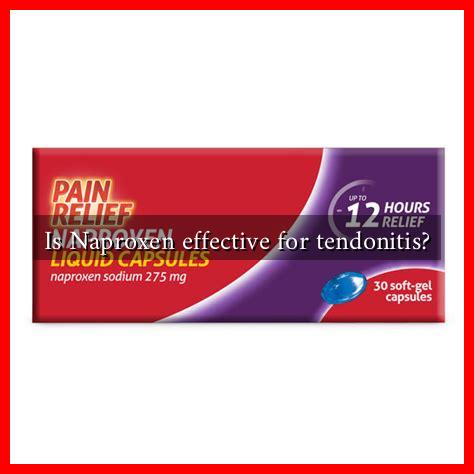-
Table of Contents
Is Naproxen Effective for Tendonitis?
Tendonitis, an inflammation of the tendons, is a common condition that affects many individuals, particularly those engaged in repetitive activities or sports. The pain and discomfort associated with tendonitis can significantly impact daily life and athletic performance. One of the most frequently used medications for managing pain and inflammation in tendonitis is Naproxen. This article explores the effectiveness of Naproxen for tendonitis, examining its benefits, potential side effects, and alternative treatments.
Understanding Tendonitis
Tendonitis occurs when a tendon becomes inflamed, often due to overuse or injury. Common sites for tendonitis include:
- Shoulder (rotator cuff tendonitis)
- Elbow (tennis elbow or golfer’s elbow)
- Wrist (De Quervain’s tenosynovitis)
- Knee (patellar tendonitis)
- Achilles tendon (Achilles tendonitis)
The symptoms of tendonitis typically include pain, tenderness, and stiffness in the affected area, which can worsen with movement. Treatment often involves rest, physical therapy, and medications to alleviate pain and inflammation.
What is Naproxen?
Naproxen is a nonsteroidal anti-inflammatory drug (NSAID) commonly used to relieve pain, reduce inflammation, and lower fever. It is available over-the-counter and by prescription, making it accessible for many individuals suffering from various conditions, including tendonitis.
Effectiveness of Naproxen for Tendonitis
Research indicates that Naproxen can be effective in managing the symptoms of tendonitis. A study published in the Journal of Orthopaedic Surgery and Research found that NSAIDs, including Naproxen, significantly reduced pain and improved function in patients with tendonitis. The anti-inflammatory properties of Naproxen help to alleviate swelling and discomfort, allowing individuals to engage in rehabilitation exercises more effectively.
Benefits of Using Naproxen
- Rapid Pain Relief: Naproxen can provide quick relief from pain associated with tendonitis, allowing individuals to resume daily activities.
- Anti-inflammatory Effects: By reducing inflammation, Naproxen can help speed up the healing process of the affected tendon.
- Accessibility: Available over-the-counter, Naproxen is easy to obtain without a prescription.
Potential Side Effects
While Naproxen is generally safe for short-term use, it is essential to be aware of potential side effects, which may include:
- Gastrointestinal issues (nausea, ulcers, bleeding)
- Increased risk of heart attack or stroke with long-term use
- Kidney problems
- Allergic reactions
Individuals with pre-existing conditions or those taking other medications should consult a healthcare professional before using Naproxen to avoid adverse interactions.
Alternative Treatments for Tendonitis
In addition to Naproxen, several alternative treatments can be effective for managing tendonitis:
- Physical Therapy: Targeted exercises can strengthen the muscles around the tendon and improve flexibility.
- Ice Therapy: Applying ice to the affected area can help reduce swelling and numb pain.
- Corticosteroid Injections: In some cases, injections may be recommended to reduce severe inflammation.
- Rest and Activity Modification: Avoiding activities that exacerbate symptoms is crucial for recovery.
Conclusion
Naproxen can be an effective option for managing the pain and inflammation associated with tendonitis. Its anti-inflammatory properties provide rapid relief, allowing individuals to engage in rehabilitation and return to their normal activities. However, it is essential to consider potential side effects and consult with a healthcare professional, especially for long-term use. Combining Naproxen with other treatments, such as physical therapy and rest, can lead to a more comprehensive approach to managing tendonitis. Ultimately, understanding the condition and exploring various treatment options can help individuals find the most effective path to recovery.

